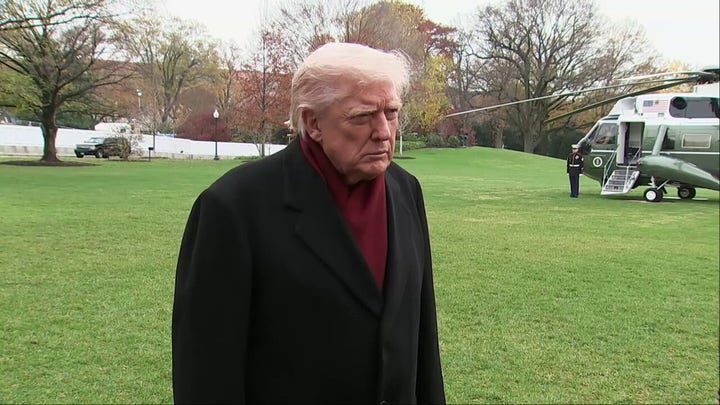This article has been disseminated on behalf of LaFleur Minerals Inc. and may include a paid advertisement.
MiningNewsWire Editorial Coverage : The most compelling moment for investors to engage with a mining company is often during its transition from explorer to producer, a period when value can inflect sharply as an organization shifts from discovery to cash flow. Explorers that successfully cross this development threshold tend to realize significant re-ratings because they de-risk their story, demonstrate reliable production capability and create a foundation for recurring revenues. For many interested in the mining space, entering at this stage allows participation before the substantial upside typically associated with the first years of production is fully priced in. This moment becomes particularly attractive when a company controls key infrastructure, is advancing toward production in a tier-one jurisdiction and trades at a valuation meaningfully below the replacement cost of its assets. That dynamic is now unfolding around LaFleur Minerals Inc. (CSE: LFLR) (OTCQB: LFLRF) (FSE: 3WK0) ( profile ) which owns a fully permitted and refurbished gold mill in Québec’s Abitibi region and is positioned well ahead of neighboring peers still working through early development stages. With a district-scale land position, an advancing flagship deposit and near-term production plans, LaFleur offers meaningful leverage to the explorer-to-producer inflection point, which historically delivers some of the best returns in the mining sector. LaFleur is among a strong group of companies working to become leaders in the mining space, including Barrick Mining Corporation (NYSE: B) (TSX: ABX), West Red Lake Gold Mines Ltd . (TSX.V: WRLG) (OTCQB: WRLGF), Pirate Gold Corp. (TSX.V: YARR) (OTCQB: SICNF) and Abcourt Mines (TSX.V: ABI) (OTC: ABMBF).
Disclosure: This does not represent material news, partnerships, or investment advice.
- LaFleur’s core strategy is built around a vertically integrated development model anchored by its wholly owned Beacon Gold Mill and its nearby Swanson Gold Project.
- As part of its transition toward production, LaFleur has begun permitting for a bulk sample of approximately 100,000 tonnes from the Swanson deposit.
- One of LaFleur’s most significant competitive strengths is its ownership of the Beacon Gold Mill, a fully permitted and recently refurbished facility in Val-d’Or.
- LaFleur has finalized a comprehensive restart plan for the Beacon Mill, budgeting between C$5 and C$6 million to complete the six-to-eight-month recommissioning process.
Vertically Integrated Path to Production
LaFleur’s core strategy is built around a vertically integrated development model anchored by its wholly owned Beacon Gold Mill and its nearby Swanson Gold Project. The company plans to feed its fully permitted processing facility with its own mineralized material, reducing dependence on third-party mills and establishing one of the lowest-cost pathways to production in the region.
This arrangement is unusual among junior miners, many of which rely on shared infrastructure or toll-milling contracts that can limit margins and create delays. By contrast, LaFleur’s ability to control both the mine and mill components provides a direct route to monetizing ore, accelerating cash flow and supporting a self-sustaining operational model.
LaFleur’s Swanson Gold Project sits at the foundation of this integrated strategy. Swanson is an advanced exploration-stage asset with more than 36,000 meters of historical drilling and 242 drill holes contributing to the geological dataset. This extensive history supports a current Indicated resource of 123.4 thousand ounces of gold and an Inferred resource of 64.5 thousand ounces, forming a strong geological basis for future mine planning.
Located within one of the most prolific gold belts in the world, the Abitibi Greenstone Belt, Swanson benefits from a district enriched by more than 200 million ounces of historical production and a long track record of supporting commercially successful mines. The combination of geological scale, existing data density and room for resource expansion positions Swanson as a cornerstone for LaFleur’s move toward production.
Recent land consolidation has extended Swanson’s total footprint to an estimated 18,300-plus hectares across 445 claims and a mining lease, strengthening LaFleur’s control over key mineralized trends and providing access to prospective areas for future drilling. This district-scale position gives LaFleur optionality to pursue both open-pit and underground targets across multiple structures. Its proximity to the Beacon Gold Mill, approximately 60 kilometers away, ensures that haulage is straightforward once mining begins, reducing both operational complexity and processing costs.
Together, Swanson and Beacon form a rare pairing: an emerging well-endowed deposit and a fully permitted mill under a single ownership structure, both with capacity to scale. For a company transitioning into production, this configuration provides strong competitive advantages and creates a clear path toward becoming one of Québec’s newest gold producers.
Aggressive Drilling to Unlock Resource Growth
To advance Swanson toward production and enhance the geological confidence required for future studies, LaFleur initiated a 7,500-meter diamond drilling program this year, targeting more than 50 regional prospects. These include Swanson itself as well as nearby zones such as Bartec, Jolin and Marimac, areas that share favorable geological characteristics and have demonstrated promising early results.
The program is designed to test high-grade structures, confirm continuity and extend mineralization along strike. Early sampling at Jolin returned values up to 11.7 grams per tonne gold, highlighting strong potential for discovering additional near-surface mineralized zones within the broader land package. An important component of the program involves step-out drilling aimed at evaluating the potential for open-pit development.
By identifying near-surface extensions and testing lateral continuity, LaFleur is working to establish a resource base that supports both initial bulk sampling and long-term production scenarios. The ability to truck material directly to the Beacon Gold Mill places added economic value on shallow mineralization, which can be rapidly monetized once mining begins.
Parallel to the regional drilling program, LaFleur is advancing a 10-hole twin-hole drilling campaign at the Swanson deposit in order to validate historical drill results, improve confidence in grade distribution and collect fresh core for metallurgical and ore-sorting studies. This data will support an updated mineral resource estimate and contribute directly to the company’s Preliminary Economic Assessment (‘PEA’), led by environmental consultant firm Environmental Resources Management (‘ERM’). The PEA will incorporate geological, mining, processing, and cost considerations to define the initial development plan that underpins LaFleur’s transition to producer status.
Collectively, the drilling and validation programs are expanding the geological understanding of LaFleur’s district-scale land position and moving the company toward a long-term vision of achieving a resource exceeding one million ounces of gold. As these programs advance, they strengthen the case for Swanson as a viable and scalable production asset situated near a fully permitted mill which underwent over $20 million in upgrades in 2022.
Bulk Sample Strategy, Advancing Permits
As part of its transition toward production, LaFleur has begun permitting for a bulk sample of approximately 100,000 tonnes from the Swanson deposit. The planned sample has an estimated average grade of 1.89 grams per tonne gold and contains roughly 6,350 ounces of gold, representing about 3% of the project’s current mineral resource.
Bulk sampling is a critical intermediate step for companies approaching production because it enables the validation of geological models, confirms metallurgical assumptions, and generates early revenue through processing. In LaFleur’s case, the existence of the Beacon Gold Mill allows the company to run bulk sample material locally, accelerating cash flow while reducing technical uncertainty.
Permitting and closure plans for the bulk sample are being advanced with Québec regulators, who oversee one of the most established mining frameworks in Canada. Québec’s regulatory environment is recognized for its efficiency and transparency, supporting the timely evaluation of mining proposals and bulk sampling initiatives. Because LaFleur already owns a fully permitted mill, its permitting requirements relate primarily to mine-site logistics rather than infrastructure construction, significantly reducing the time required to begin test mining.
To support its upcoming production decisions, LaFleur engaged ERM’s Technical Mining Services Group to complete a PEA for Swanson. The PEA will include mine design, mineral resource modelling, metallurgical testing, processing flowsheets and cost projections required for an initial production scenario. Importantly, the study will incorporate current gold price assumptions, which remain historically elevated.
Bulk sampling will provide vital operational data, such as dilution rates, mining conditions, haulage efficiency and mill performance, that feed into the PEA and future feasibility studies. For investors, the combination of permitting progress, bulk sampling preparation and economic analysis creates a strong foundation for LaFleur’s near-term production timeline.
Beacon Mill: A High-Value Strategic Asset
One of LaFleur’s most significant competitive strengths is its ownership of the Beacon Gold Mill , a fully permitted and recently refurbished facility in Val-d’Or, a recognized mining camp. The mill, acquired through Monarch Mining’s CCAA restructuring process in 2024, underwent approximately C$20 million in upgrades in 2022, leaving it in excellent operational condition. With a processing capacity of more than 750 tonnes per day, Beacon provides LaFleur with an infrastructure advantage that few junior miners possess.
The mill benefits from year-round road access, a skilled regional workforce, reliable grid power and proximity to numerous exploration-stage deposits in the region. As a result, it not only supports LaFleur’s own production plans but also creates opportunities for future custom milling revenue once operations are underway.
An independent valuation by Bumigeme, a Montréal engineering firm, placed the replacement cost of the Beacon Mill and its tailings facility at approximately C$71.5 million. Rehabilitation requirements were estimated at a modest C$4.1 million, highlighting the mill’s strong condition and low restart cost. Notably, the mill carries no royalties or encumbrances and is backed by a C$2.4 million reclamation bond. These features position Beacon as an exceptionally valuable asset relative to LaFleur’s current market valuation.
Owning a permitted mill dramatically reduces the typical multiyear timeline associated with constructing processing infrastructure. For companies operating in regions such as the Abitibi, where environmental requirements are robust and permitting processes are thorough, having an existing facility is a major strategic advantage. LaFleur’s ownership of Beacon effectively moves the company ahead of nearby peers, which must still navigate planning, financing and permitting for mill construction. Combined with Swanson’s resource potential and district-scale land position, the Beacon Mill establishes a clear path to production that supports LaFleur’s ambition to become one of Québec’s next gold producers.
Restart Plan, Regional Momentum and Upcoming Catalysts
LaFleur has finalized a comprehensive restart plan for the Beacon Mill, budgeting between C$5 and C$6 million to complete the six-to-eight-month recommissioning process. The company expects to begin production ramp-up by early next year and reach full operational capacity by year end. The restart plan includes approximately C$3.8 million for mill equipment upgrades and about C$1.8 million for repairs and improvements to the tailings storage facility. These targeted investments will allow LaFleur to resume processing operations safely and efficiently while meeting Québec’s regulatory standards.
The mill restart positions LaFleur within a vibrant and rapidly consolidating region of the Abitibi. Recent corporate transactions, such as Fresnillo’s acquisition of Probe Gold and other strategic deals within the Val-d’Or region, underscore the district’s attractiveness and highlight rising valuations for companies controlling both resources and infrastructure. Probe’s valuation of approximately $70–$80 per ounce of gold in the ground helps establish a regional pricing precedent. By comparison, LaFleur’s combination of the Beacon Mill and the Swanson resource appears meaningfully undervalued relative to peers.
To support its production restart, LaFleur engaged FMI Securities to launch Gold-Linked Convertible Notes for up to C$7 million, following successful completions of a C$2.88 million LIFE Offering and C$1.66 million flow-through financing. These financing steps demonstrate investor confidence in LaFleur’s path to production and strengthen the company’s treasury as it advances into the next phase of development.
With a fully permitted mill, a progressing bulk sample program, expanding drill results and a forthcoming preliminary economic assessment, LaFleur occupies a unique position within Québec’s premier gold belt. The company’s integrated model, regional infrastructure advantages and near-term production timeline align strongly with the explorer-to-producer transition point that historically delivers some of the most compelling upside across the mining sector.
Strategic Moves Signal Expanding Momentum in Gold Exploration
The gold sector continues to advance through a wave of strategic realignments, drilling initiatives and operational milestones that signal both confidence and long-term planning across the industry. These unfolding moves point to a sector embracing opportunity while preparing for future growth cycles.
Barrick Mining Corporation (NYSE: B) (TSX: ABX) board of directors has authorized Barrick’s management team to explore an initial public offering of a subsidiary that will hold Barrick’s premier North American Gold Assets (‘NewCo’). NewCo would be anchored by Barrick’s joint venture interests in Nevada Gold Mines and Pueblo Viejo, as well as Barrick’s wholly owned Fourmile gold discovery in Nevada.
West Red Lake Gold Mines Ltd . (TSX.V: WRLG) (OTCQB: WRLGF) announced a fully funded infill drilling program at its 100% owned Fork Deposit located approximately 250 meters southwest from its Madsen Mine in the Red Lake Gold District of Northwestern Ontario, Canada. The core of the Fork Deposit has been re-envisioned as a high-grade near-mine resource expansion target that is a priority for immediate advancement.
Pirate Gold Corp. (TSX.V: YARR) (OTCQB: SICNF), formerly Sokoman Minerals Corp., announced that its common shares have commenced trading on the TSX Venture Exchange under the new ticker symbol. The company’s common shares will continue to trade on the OTCQB Venture Market under the ticker SICNF. The name and symbol change unify the company’s identity under the Pirate Gold banner, reflecting a renewed focus on discovery, value creation and the frontier spirit rooted in Newfoundland’s exploration history.
Abcourt Mines (TSX.V: ABI) (OTC: ABMBF) has received its environmental certificate of authorization for custom milling of ore from off-site deposits at its Sleeping Giant mill. This certificate of authorization allows Abcourt to begin commercial discussions with potential clients, accelerate the environmental authorization process and begin processing gold ore from mining companies that do not have a mill to extract gold from their ore.
These developments underscore a gold industry that is actively optimizing assets, accelerating advancement of near-term opportunities and positioning itself for stronger performance in the years ahead. As these initiatives progress, they offer a glimpse into how the next generation of gold production, discovery and value creation may unfold across key mining jurisdictions.
For further information about LaFleur Minerals, please visit the LaFleur Profile .
About MiningNewsWire
MiningNewsWire (‘MNW’) is a specialized communications platform with a focus on developments and opportunities in the Global Mining and Resources sectors. It is one of 70+ brands within the Dynamic Brand Portfolio @ IBN that delivers : (1) access to a vast network of wire solutions via InvestorWire to efficiently and effectively reach a myriad of target markets, demographics and diverse industries ; (2) article and editorial syndication to 5,000+ outlets ; (3) enhanced press release enhancement to ensure maximum impact ; (4) social media distribution via IBN to millions of social media followers ; and (5) a full array of tailored corporate communications solutions . With broad reach and a seasoned team of contributing journalists and writers, MNW is uniquely positioned to best serve private and public companies that want to reach a wide audience of investors, influencers, consumers, journalists and the general public. By cutting through the overload of information in today’s market, MNW brings its clients unparalleled recognition and brand awareness.
MNW is where breaking news, insightful content and actionable information converge.
To receive SMS alerts from MiningNewsWire, text ‘BigHole’ to 888-902-4192 (U.S. Mobile Phones Only)
For more information, please visit https://www.MiningNewsWire.com
Please see full terms of use and disclaimers on the MiningNewsWire website applicable to all content provided by MNW, wherever published or republished: https://www.MiningNewsWire.com/Disclaimer
MiningNewsWire
Los Angeles, CA
www.MiningNewsWire.com
310.299.1717 Office
Editor@MiningNewsWire.com
MiningNewsWire is powered by IBN


















